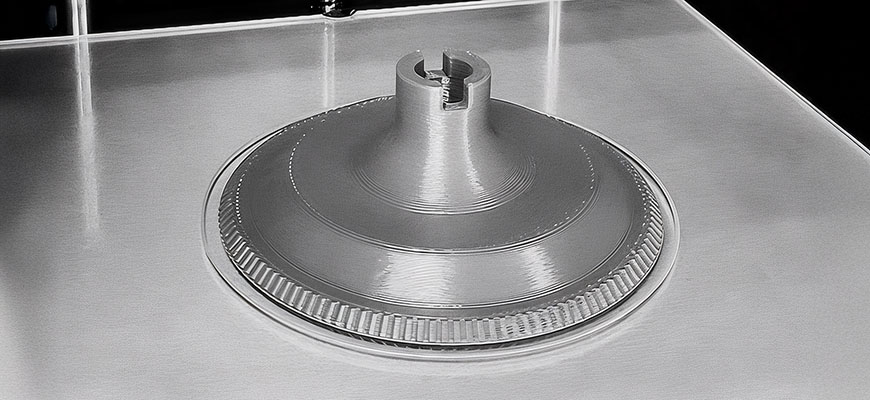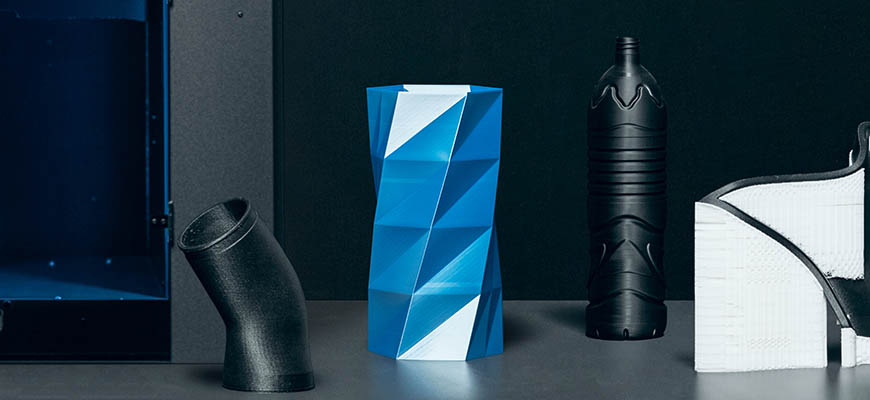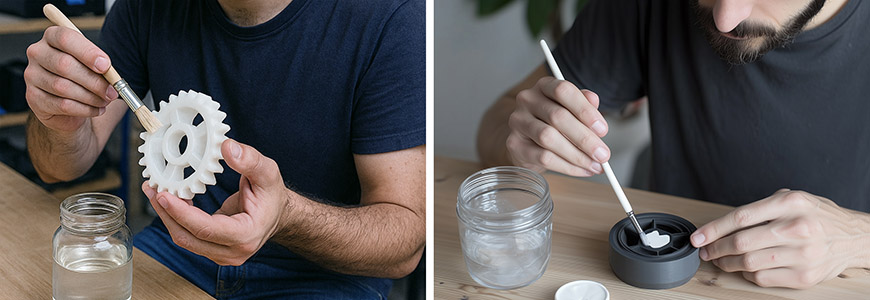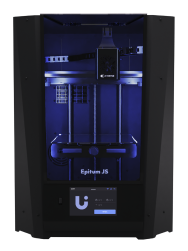
PETG ranks among the top three most common 3D printing filaments, alongside ABS and PLA. It strikes a balance between the properties of these two materials,combining PLA's ease of use with ABS's strength and flexibility. This filament is easy to use and has reduced toxicity, similar to PLA, but also provides greater strength and chemical resistance, similar to ABS.
PETG, or polyethylene terephthalate glycol, is a derivative of standard PET. The addition of glycol makes PET more flexible and less brittle, providing the characteristics needed for 3D printing.
Why Print with PETG?
Pros
One of the key advantages of PETG is its strength combined with flexibility. This makes it a more favorable choice for creating functional parts compared to PLA, which easily breaks under significant stress. Additionally, PETG has excellent layer adhesion, minimizing the risk of delamination, which is crucial for large, thin-walled, and functional objects.
These qualities make it a significantly better option for printing functional products than standard PLA. These benefits are further enhanced by its resistance to many chemicals and UV light, ensuring its durability in outdoor environments, even when exposed to prolonged sunlight and in other harsh environments.
Another important feature of PETG is that it is relatively easy to print with. It absorbs moisture poorly and does not require special storage conditions, making thorough drying of the spool before printing unnecessary.
PETG also has less shrinkage compared to ABS. This means that during printing, a PETG part will retain more accurate dimensions and will not deform as significantly. Moreover, PETG does not emit toxic fumes, making it suitable for printing on open 3D printers.

Cons
However, this material also has significant issues and limitations. The primary issue is its low heat resistance, with only PLA having a lower operating temperature. Typically, PETG can withstand around 80 degrees Celsius before it begins to soften. ABS should be preferred for applications where your part will be exposed to high temperatures.
During printing, PETG tends to produce a large number of stringy extrusions between model elements. Infill can also be challenging due to its stickiness and viscosity.
This problem can often be mitigated by experimenting with settings and selecting optimal temperatures for your specific filament. Proper adjustments to extrusion settings, deposition speed and temperatures are necessary to avoid issues like excessive stringing and poor infill. The free Epitum material profile base contains ready-made settings for many filaments from different manufacturers, including PETG. All you need to do is load the desired material profile into your Epitum 3D printer and start printing without wasting time on fine-tuning.
Another notable characteristic of PETG filament is its strong adhesion to the build plate. While many plastics may detach during printing, PETG often adheres so strongly that it can damage the build platform upon removal.
Unlike ABS, PETG is not suitable for chemical post-processing. This means that mechanical methods such as sanding or polishing must be employed to remove imperfections and improve the part's appearance, which requires more time and effort. In some cases, PETG may be difficult to sand due to its stickiness.
PETG Filament Types
- Standard PETG:
Standard PETG is the most common variation used for most tasks. This plastic has typical advantages and disadvantages, offering a balance of strength, flexibility, and durability. It is also available in a wide range of colors. - Transparent PETG:
Notably, the transparent variation of PETG is highly translucent, making it an ideal choice for models where internal structures visibility or specific visual effects are needed. This type is particularly useful for creating models, especially architectural ones, protective shields, lamps, and other decorative applications. - PETG CF - Composite PETG with carbon fiber:
Like all composites with carbon fiber, this variation offers significantly improved rigidity and strength. This material is suitable for creating functional products where additional stiffness is needed. - Biocide PETG:
Biocide PETG is standard PETG with special nanoparticles that prevent the settlement and growth of bacteria, fungi, algae, mollusks, slugs, worms, etc., on its surface and within its structure. This material is ideal in environments where hygiene is crucial, such as in medical applications.
There are also other, less common, mainly decorative variations of PETG, such as PETG with phosphorescent additives that glow in the dark after exposure to light, or PETG with a metallic effect that gives the surface a metallic sheen.
Exploring PETG 3D Printing Applications
Functional Prototypes:
PETG is well-suited for creating functional prototypes that do not require high heat resistance. It combines strength and flexibility, making it ideal for printing various hooks, brackets, clips, and some lightly loaded gears.
Protective and Decorative Elements:
This filament, unlike others, can come in variations with a high degree of transparency. This makes it indispensable for printing various protective elements and decorations where light transmission is important.
Outdoor Applications:
PETG filament is excellent for creating functional and decorative products exposed to sunlight and rain, setting it apart from ABS.

Architectural Models:
Models rarely undergo extreme stress and temperatures and often need to be large with transparent elements. This makes PETG an ideal choice for large-scale models of buildings, interiors, and other similar designs.
Medical Equipment:
PETG is also well-suited for medical applications requiring good strength. Additionally, the biocidal variation of PETG may prove useful.
Tooling:
PETG can be used to create custom tools and fixtures that precisely match specific needs, significantly expanding production capabilities. These include unique handles, fasteners, and other functional parts.
Decorative Elements:
PETG is available in a wide range of colors and is non-toxic, making it a good choice for creating toys and decorative elements. Its transparency also enables interesting visual effects.
Tips for PETG Plastic 3D Printing
Filament Selection:
When choosing PETG filament, consider its quality and prefer well-known manufacturers. Avoid cheap or uncertified materials, as they may contain impurities that can significantly degrade your 3D printing experience.
Temperature:
PETG requires a higher 3D printing temperature than PLA. It is typically around 220-250°C. Start with medium values and adjust the temperature depending on your 3D printer and the material's specifics. If the temperature is too low, you will face insufficient layer bonding, and if it's too high, excess plastic may ooze out, spoiling the appearance and geometry of the part.
The recommended build plate temperature is around 70-90°C. Note that on some surfaces, PETG can stick too strongly.
Drying:
PETG is not highly prone to moisture absorption, so drying the material is often unnecessary. However, it is always better to store the material in a dry place and dry it if it has been stored in a humid environment for a long time. Wet filament can cause bubbles and significantly reduced print quality.
Post-Processing PETG
Post-processing PETG may not be as easy as with other materials, but with the right techniques, it is possible.
Removing Strings and Excess Material: PETG tends to form thin strings between model elements, which can be removed with a sharp knife and clippers. Sometimes a lighter or a thin soldering iron tip can be used as well.
Surface Sanding: PETG can be sanded, although the process will be more challenging than with ABS plastic. Start with coarse sandpaper and gradually move to finer grits. Note that the density of the printed part can influence post-processing, especially when sanding. It is also easy to damage the material's structure using this method.

Chemical Treatment: Unlike ABS, which is easily treated with acetone, PETG is less susceptible to solvents. However, some chemical agents, such as dichloromethane, can be used to smooth the surface. Be careful, this method is suitable only for experienced users and requires special caution and a well-ventilated workspace.
Bonding: PETG can be bonded using cyanoacrylate glue (super glue) or epoxy. For stronger bonding, the surfaces can be slightly sanded to improve the adhesive's grip on the material.
Painting: PETG can be painted, but the surface must be properly prepared. First, sand the part and apply an even layer of primer.

Conclusion
PETG filament is excellent for creating functional, chemically resistant, and durable products that can be used outdoors. However, it has low heat resistance.
PETG rightly occupies a niche between PLA and ABS and can be considered a better option for starting work on more utilitarian tasks than PLA. However, for most applications, ABS remains a more advantageous choice.
Learn more about the benefits of ABS filament and how it can be used.





